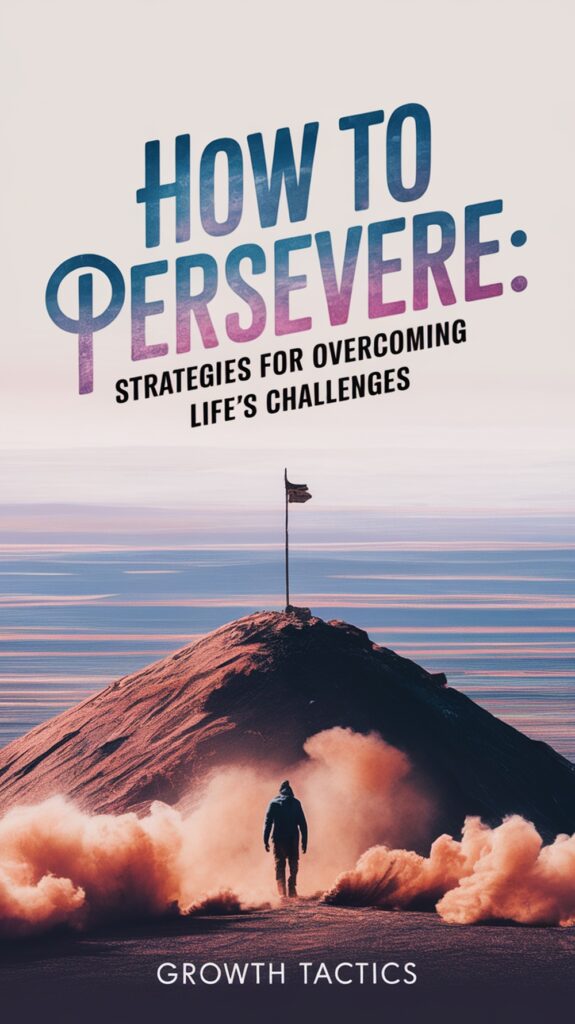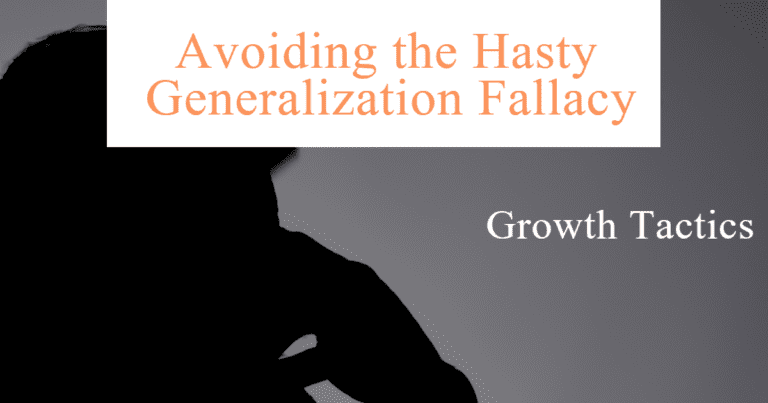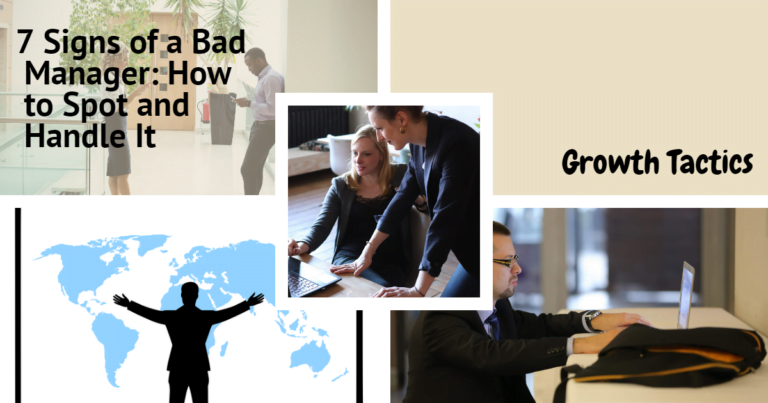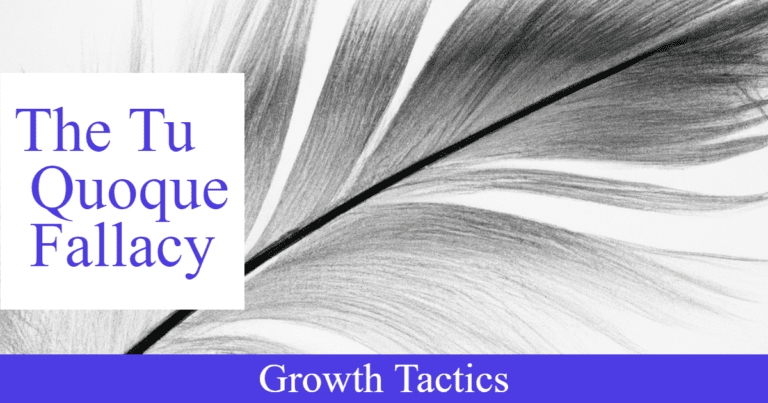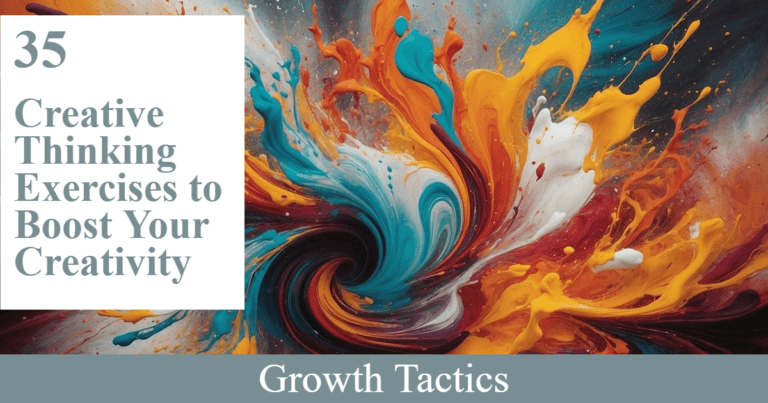Perseverance is sticking with it even when the path seems uphill and unpaved. It’s the silent power that propels you forward in hard projects, difficult relationships, or personal defeats.
Now you know that life’s hard stuff doesn’t come with shortcuts, but learning to persevere gives you a tool to generate consistent momentum.
Let’s jump in.
Jump To Section
Understanding Perseverance
Perseverance isn’t just sticking with it. It’s building the endurance to quest, regardless of how difficult the path. It’s a magical mix of hard work, mental strength, and fortitude, a recipe for success. Let’s look at its essential components.
The Psychology
At its heart, perseverance is a mind game. Building a mindset of grit transforms your attitude from one of irritation to empowerment. Rather than agonizing over failures or setbacks, perseverance makes you view them as being part of the process.
It’s important to highlight effort over outcome. This orientation toward learning promotes trying new things and making progress, whereas a performance-driven attitude can cause you to burn out or become disheartened.
For instance, if you’re picking up a new language, marking achievements like nailing down a few dozen phrases really keeps you inspired, even though fluency is still a long way off. This strategy reduces the psychological burden of big challenges.
The Misconception
Myth #1: Perseverance is purely an innate trait. It’s something you can get better at. Similar to building muscle at the gym, perseverance strengthens with repetition. Yes, it’s uncomfortable but breaking through these periods is where you experience the growth you thought was impossible.
Myth #2: Perseverance means never retreating. Instead, it’s about being committed but keeping motivated. Tweaking your approach when something isn’t working is not quitting, it’s strategizing. This ‘keep on keeping on’ mindset is what makes perseverance sustainable.
How to Persevere

Let’s explore the core ingredients that develop perseverance.
A Clear Vision
Perseverance starts with knowing where you’re going. A clear vision is your guiding star. It gives you direction when the going gets tough. Without it, it’s easy to falter and lose enthusiasm.
Consider your ambitions, be they personal, professional, or otherwise. Are they particular and significant to you?
With this clarity, you’ll be more likely to survive the inevitable plateaus and frustrations. Write your vision down, check on it regularly, and let it remind you why you started.
A Support System
Perseverance thrives with the right people in your corner. Supportive friends, family, or mentors can encourage you and keep your feet on the ground when the doubt monster starts whispering in your ear.
Mentors are great for swapping advice or toasting small victories. Surround yourself with individuals who energize rather than exhaust you.
A Setback Strategy
Setbacks are inevitable. Resilience to setbacks is crucial. Even just a good comeback plan can stop you from getting discouraged.
Begin by redefining failures as chances. Ask yourself questions like “What did this teach me?” or “What’s another way to approach this?” For example, if a business pitch gets turned down, dissect the criticism, tweak your idea, and give it another go.
This mindset shift, seeing obstacles as detours, not dead ends, keeps you flexible and inspired.
A Positive Mindset
A growth mindset is the answer to perseverance. It’s about believing you can get better and welcoming the struggle.
Tell yourself to give yourself time. Consider accomplished musicians investing years honing their skill. They don’t quit after a rough studio session; they view it as progress toward mastery.
Toast the little victories and cut yourself some slack en route.
The Inner Mindset

Grit starts internally. Your mindset lays the groundwork for the grit you exhibit in the face of adversity. Forming your inner mindset isn’t a fast process; it’s a lifetime commitment to introspection, contemplation, and evolution.
Self-Compassion
Self-compassion is underrated, but it’s the foundation of grit. When you fall down, how do you respond? Do you beat yourself up or treat yourself with the kindness you’d give a friend?
Tracking your thoughts over time can highlight trends. You may find a tendency to self-blame for what is out of your control or minimize your accomplishments. Self-compassion reverses that pattern. Rather than beating yourself up for missteps, see them as learning experiences.
For instance, if you blow a work deadline, recognize the hardship and concentrate on what you can do better next time.
Self-compassion enables you to recharge rather than burn out.
Personal Choice
Deep down, grit is an act of will. It’s the choice to continue, not because it’s convenient, but because it’s consistent with what you believe in and what you want.
Enter the ‘Power of Yet’. Rather than saying, I can’t do this, say, I can’t do this yet. This subtle change can be extremely powerful.
Internal Dialogue
Your self-talk determines your response to challenges. Self-talk can undermine or strengthen your grit.
Talking down to yourself, saying things like “I’m not smart enough” or “I’ll never get it,” creates a self-fulfilling prophecy. These thoughts aren’t truths. By catching these negative self-talk patterns, you can challenge them.
Using empowering statements, such as “This is difficult, but I’ll be able to crack it,” strengthens the mind. It’s not about empty optimism; it’s about believing in yourself with realism.
The Perseverance Paradox

The perseverance paradox reveals a counterintuitive truth: recognizing your own vulnerabilities can actually fuel resilience. This concept, grounded in both human experience and ancient philosophy, emphasizes that through surrendering to fragility, you unleash a profound power.
Let’s explore this through three critical aspects: stubbornness, burnout, and pivoting.
Stubbornness
What’s often called perseverance is really just stubbornness in disguise. You dig in, refuse to quit, and tell yourself it’s grit. When does persistence become inflexibility? You can answer this by determining if you’re feeding your ambitions or fueling an ego.
Say you’re heading up a project that’s in trouble. Do you trudge forward in the dark, praying brute force will save it? Or instead, do you stop and recalibrate? Real perseverance is a careful mix of grit and flexibility.
Burnout
Burnout is a standard trap of grit. If you push too hard for too long, you run the risk of draining your mental, emotional, and physical reserves. Ironically, admitting your boundaries can propel you farther down the road.
It’s the ones who are aware of their vulnerabilities, be it fatigue, stress, or resources, who tend to persevere. They pause to recharge, delegate, and ask for help when needed.
Pivoting
Pivoting isn’t quitting, it’s recalibrating when the way forward is failing. Here’s where faith and flexibility meet.
Take, for instance, a small business owner dealing with slumping sales. Rather than obstinately hold onto a losing plan, they adapt to changing customer needs.
This ability to learn, adjust, and act is crucial. Strength emerges when you acknowledge what’s not working and make a change.
Conclusion
Perseverance isn’t striving and straining until you fall. It’s moving forward, one small step after another, when the path becomes rough. By cultivating the right mindset and crafting a supportive environment, you can turn obstacles into opportunities.
Keep in mind, persistence is a muscle you can build. Consider the tactics we’ve discussed, customize them to your personal path, and leap one tiny, purposeful leap forward today.
If you liked this post, share it with someone who could use it, and subscribe for more Growth Tactics.
